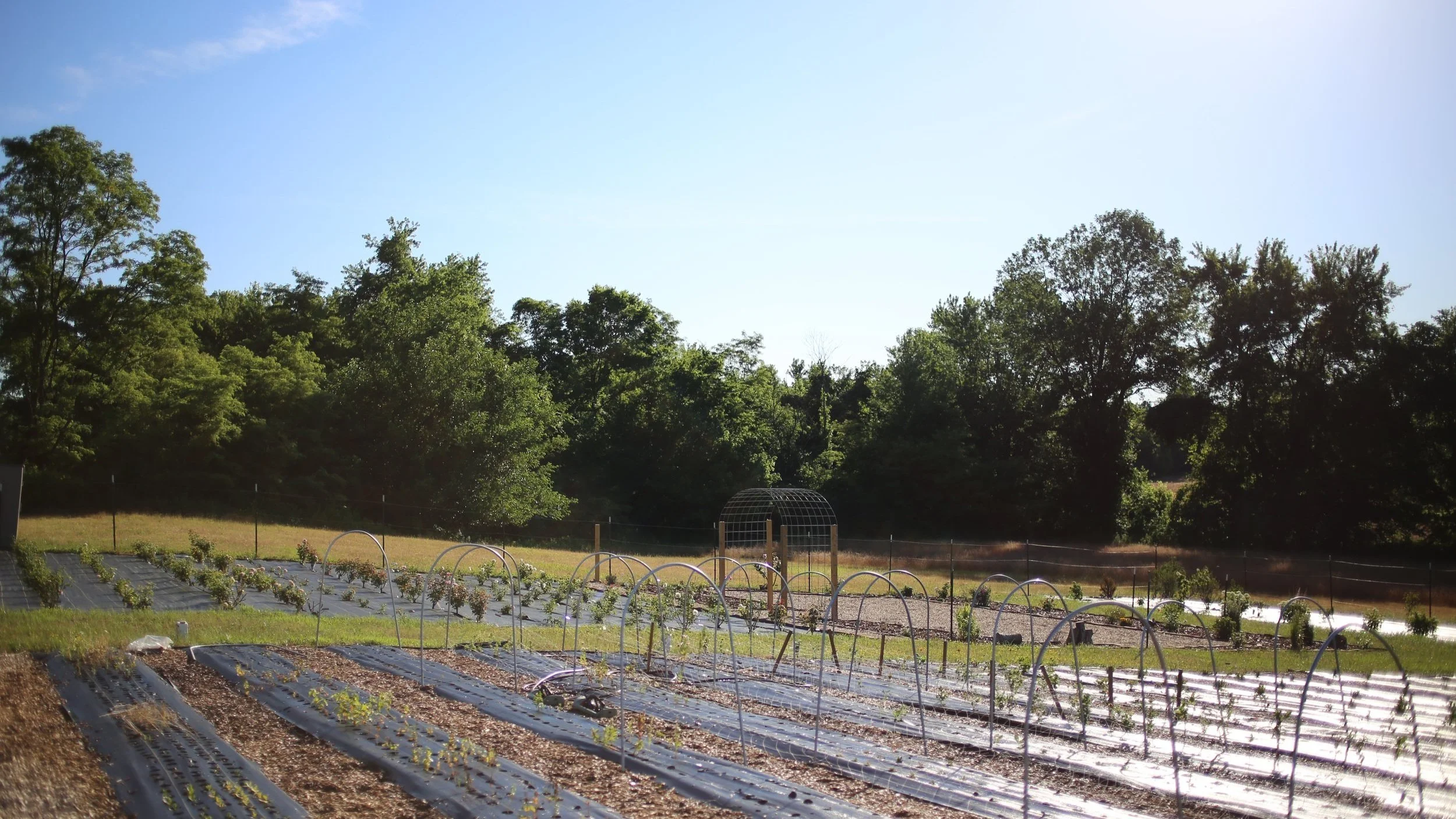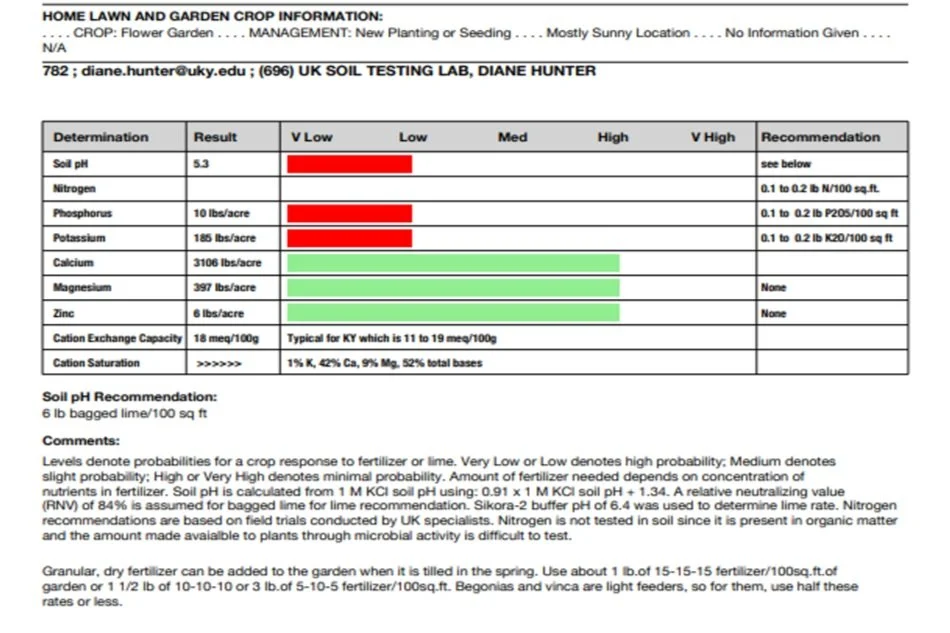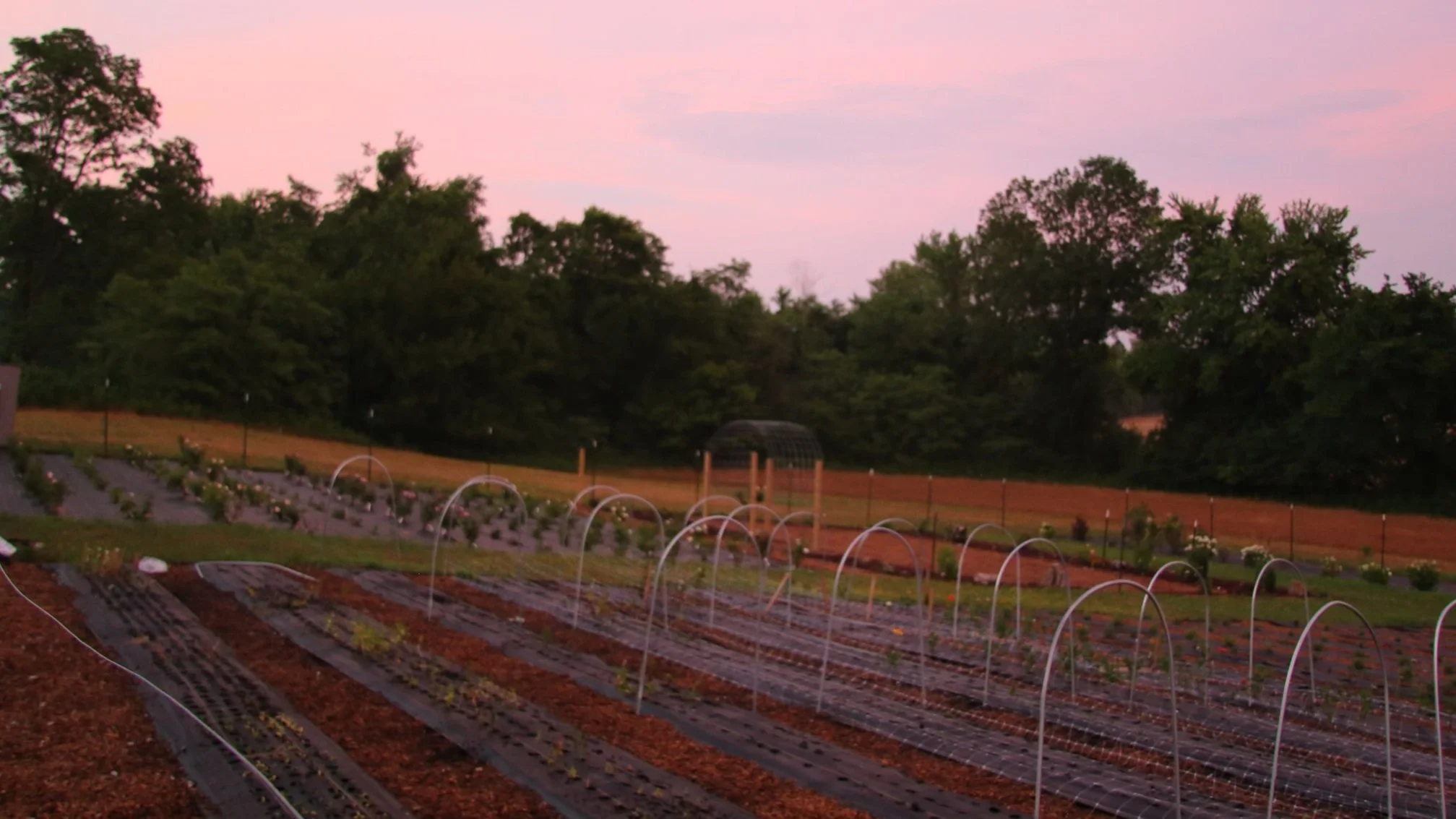First Year (So Far)
6 Months of Farming
July 8th 2022
We are into July - and I thought I’d take time to update transparently about how the first half of the first year of farming is going; the setbacks and all the gritty stuff that, in this day and age of perfectionism, is not shared nearly as much as it should. Fear of failure is something I struggle with day-to-day, and I’ve found it’s especially so in this business. I shield it because I want it to succeed more than most anything of my life. I suppose I’m like most people in that when you’re given the opportunity to do the thing you’ve always wanted to do - you want to give it your best and you expect the best. But sometimes life presents you with unprecedented circumstances. Failures, setbacks, and gritty stuff are human experiences we all face. And we all can learn something from hearing of someone else’s struggle - to either teach us what not to do, to be grateful for what we have, or to teach us how to emerge from a similar problem.
So let’s dig in.
The Soil
I suppose I assumed that because I’d farmed before (on a much smaller scale, mind you) - that the practices would be fairly similar and applied exponentially. And man, I have been embarrassingly wrong about that entire assumption. We are finding that our land, just a few miles from where we lived before, has very different ecology. The soil, the water, the pest pressure. We have essentially had to relearn all the basics, and trash every assumption we thought we had understood about our local climate and figure out our farm’s microclimate which we still do not fully understand. It is just now coming into focus.
We believe we are having a pH issue with our soil. For most flowers and vegetables, a neutral soil is best (pH 6.5 to 7).. and ours has been all over this year. We collected soil samples of the bare ground in early spring and had them tested through UK. Previously, at our other plot, we didn’t test the soil or make adjustments, and our crops did fine. The soil was fertile, dark, and loamy. So I have no experience or understanding of soil pH. Although we had these samples done, I’m no agronomist - and these results read like a foreign language. But as you see plainly - when these tests were done our soil pH was quite low / acidic at 5.3. However — now in summer our soil pH is high. It is now more basic / alkaline (pH 7.8 - 8.5) - and so is our irrigation water (7.5). Several hypotheses here: could be the water we are using, could be the fact that we are in lowlands where we receive lots of runoff that can cause higher pH. High pH can also be caused by unfinished compost - and compost is what we topped all of our beds off with from a vendor we have not used before.
In May, I planted out my seedlings, and I performed all my usual care to rear them into maturity - but these seedlings I planted months later were not growing as I expected them to be. They seemed stunted - hardly any sign of growth. At first, I attributed it to stress due to late planting - and maybe that’s partially the problem - but it seemed greater than that. By late June, I was receiving hardly any flowers from plants planted out in May. And now into July plants still are no higher than my knee, mostly. Through research, I’ve found that pH imbalance, particularly more basic soil, can cause nutrient uptake issues.. resulting in stunted growth.
After spending our personal money and my business money on the infrastructure of the farm, I can’t describe the lows I’ve been in realizing that I’m a long way off from earning back for what we’ve invested.. and it being partially due to a lack of foresight on our land’s soil and water. And further, it is not something that I can adequately amend now that rows are covered and crops are planted - as amendments should be mixed into the soil.
To combat this: we are going to scrap some of the annual rows that have lost plants, roll back the row covers, amend those beds to the correct nutrients - and replant with perennials from a local nursery to jump start us mid-season. We are also very lucky to have supplemental supply from another local flower farmer until we can get on our feet.
The Pond & Water
We chose our pond because we would be using our land’s own water supply - making us a more sustainable farm and making us an off-the-grid farm with $0 utilities. Further, getting on city water costs over $2000 to just install a meter at the farm. And the intention has been good - however - again, with lack of foresight we have made several mistakes. One is assuming our pond water is safe to use on our plants. In the spring, the water was running clear and the pond looked amazing. Today, the water is green from algae, has an odor, and is covered over by duckweed. Our good intentions could very well be compromising the plants viability. As I mentioned above, the water’s pH is now reading 7.5, which should be closer to neutral pH at 7.0.
Further, we did not anticipate that the pond would ever dry up. In June we experienced massive heat waves. Weeks and weeks of over 90 degree temperatures, and it continues to stay nearly 100 degrees weekly and it’s only the first week of July. We have had very little rain since the beginning of summer. And though we use the water sparingly - the pond still was drying up. The banks previously unseen are starting to show as the water recedes. And we are at a point where we just pray for rain to replenish the pond and water our plants. There is still about 4 feet of water in our roughly 40ft diameter pond, which means about 35,000 gallons remain - and because it is a sanctuary for wildlife on our farm we absolutely do not want to dry it up. We are at a crossroads with this issue.. do we invest more money in a system that is not as stable, or invest money in a system that will cost us money monthly and throughout the life of the farm.
We have an appointment with a pond water specialist for their opinion and water testing, and we also believe we will be investing in municipal water access for security sake though it is not what we imagined for our farm. We also really want to work on the natural health of the farm. Now that we have electricity we want to incorporate an aerator (pond fountain or bubbler) which introduces oxygen into the water and cuts down on algae growth. We also want to incorporate native pond plants that’ll help clean the water.
Farm Growth
We would like to be thinking about spring planting, crop expansion, and infrastructure builds for the remainder of the year and into 2023.. however, we are set way back in our financial goals because we don’t have much to sell. So our stride for growth has become stalled through lack of money flow. We still have some hope left - as the year is not done - that we will raise money to continue building up the farm. Plants that were sown in May are not dead, they’re just slow to get going. Replacement plugs will be here in a few weeks for a bumper crop. Dahlias are getting taller everyday. Weddings are coming up, and new weddings will be booked for next year. We have some really awesome, supportive customers who show up for us no matter what- and they’re priceless to us.
As my husband likes to remind me in my slumps - it’s nothing that can’t be fixed. We are learning, and we are trying. We’ve done a lot in half a year. Furthermore, we are making something using good intentions, that’s unique and requires taking the path less travelled so we can create a farm that fits our own visions and values. There aren’t many specialists or farms we can look to for guidance. That’s not to say we won’t bend or pivot if needed. But I just need to remind myself we committed to a lot of doing and learning this year - and we are really trying. And that’s worth something.




